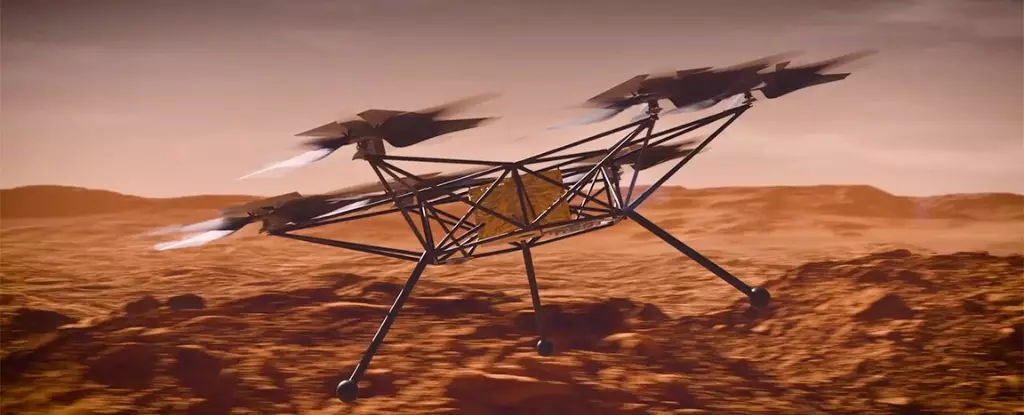The dawn of aerospace innovation on extraterrestrial bodies was marked by NASA’s historic achievement in April 2021. The small helicopter, Ingenuity, surged into the Martian sky, forever altering our perception of aerial exploration in extraterrestrial conditions. As the first powered aircraft to successfully fly on another planet, Ingenuity was more than just a feat of engineering; it was a catalyst for future missions that could extend the horizons of space exploration. Following Ingenuity’s profound success, NASA has unveiled the concept of its next aerial vehicle, the Mars Chopper, designed to take Martian exploration to unprecedented heights.
Ingenuity embarked on its maiden flight on April 19, 2021, demonstrating that powered flight was feasible in Mars’ incredibly thin atmosphere. This helicopter—more of a drone—was initially packed aboard the Perseverance rover as a technology demonstration during the 2020 mission launch. During its 60 flights, Ingenuity showcased its ability to traverse the Martian terrain, gathering vital data to scout areas ripe for further investigation. Despite the formidable challenges presented by Martian atmospheric conditions—where air density is less than one percent of that found on Earth—Ingenuity persevered, proving that aerial vehicles could adeptly navigate alien landscapes.
One of the central challenges faced by aerial craft like Ingenuity is the need for enhanced lift due to the low-density atmosphere. This requires an innovative rotor design capable of generating substantially more lift than what is typically expected in Earth’s denser atmosphere. Additionally, Martian dust, which can become airborne, poses a risk to the fragile components of these flying machines. The successful operation of Ingenuity offered profound insights into building effective vehicles tuned for the unique Harper environment of Mars.
Building upon Ingenuity’s legacy, NASA has revealed its next-generation aerial vehicle, the Mars Chopper. This advanced drone is set to enhance capabilities significantly, with an increased payload capacity designed to carry sophisticated scientific instruments for in-depth analysis and imaging. Unlike its predecessor, which primarily served as a testbed for flight technology, the Mars Chopper is geared towards actively supporting future exploratory missions on the Martian surface.
The envisioned design of the Mars Chopper features an impressive six-rotor model significantly larger than Ingenuity, roughly resembling the size of an SUV. Each rotor is equipped with six blades engineered for optimal performance in Mars’ challenging atmospheric conditions. Together, these rotors will allow the Chopper to carry a maximum payload of five kilograms over distances of up to three kilometers. Such capabilities will not only facilitate reconnaissance missions but also pave the way for terrain mapping and scientific analysis that could improve our understanding of the Red Planet.
A New Era of Exploration
The development of the Mars Chopper represents a notable evolution in Mars exploration technology. Unlike previous missions largely reliant on rovers for surface studies, this airborne vehicle opens up new avenues for reconnaissance to complement ground activities. Notably, the Mars Chopper promises to cover expansive areas that rovers might find difficult or impossible to access, providing critical aerial support to any human exploration endeavors in the future.
As researchers at NASA’s Jet Propulsion Laboratory and Ames Research Center collaborate on this innovative concept, excitement builds around the potential of the Mars Chopper. Its introduction may reshape our methodologies for studying alien worlds with solid surfaces and atmospheres conducive to powered flight. The implications extend beyond Mars as the technological framework developed could pave the way for aerial exploration on numerous celestial bodies, enhancing our quest to unlock the mysteries of the universe.
As Ingenuity blazed the trail with its on-ground success, the Mars Chopper is poised to soar beyond the legacy of its forerunner. By enhancing our capabilities for aerial reconnaissance and scientific exploration, the Mars Chopper pledges to validate the enormous potential that powered flight holds for unraveling the secrets of distant worlds. The journey of exploration is set to reach new heights, and as we look to the skies of Mars, the future is teeming with possibilities.


Leave a Reply